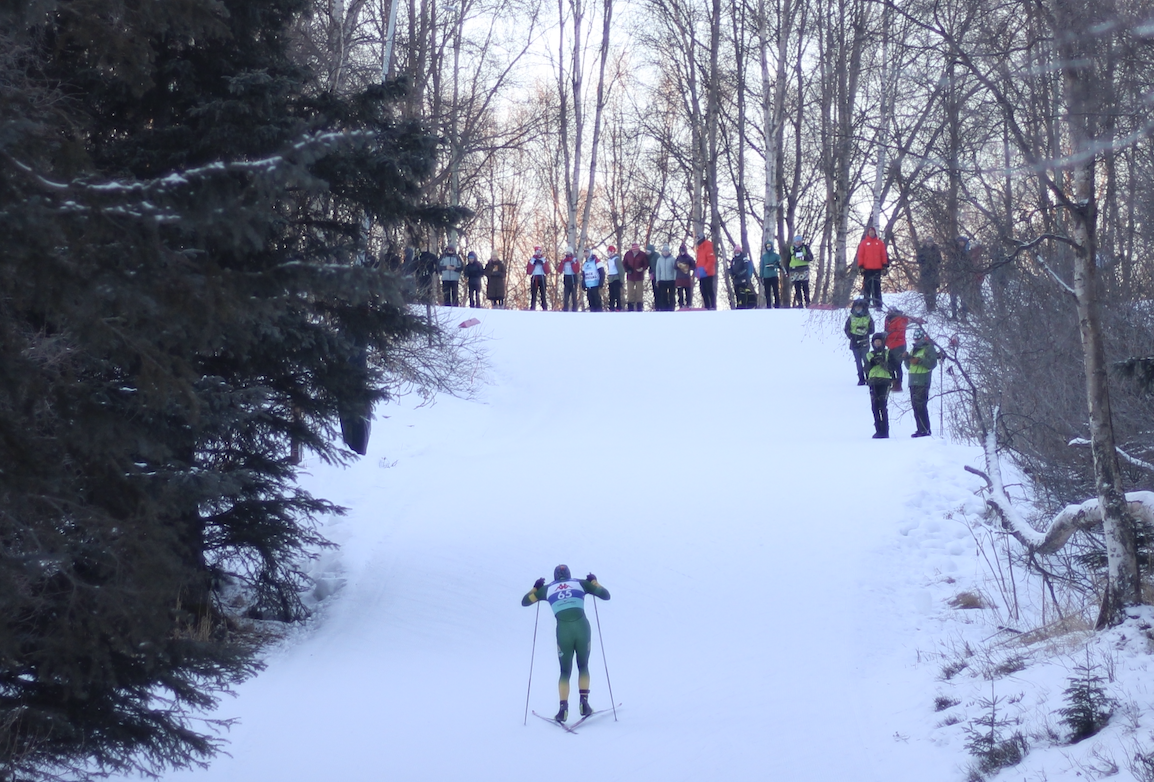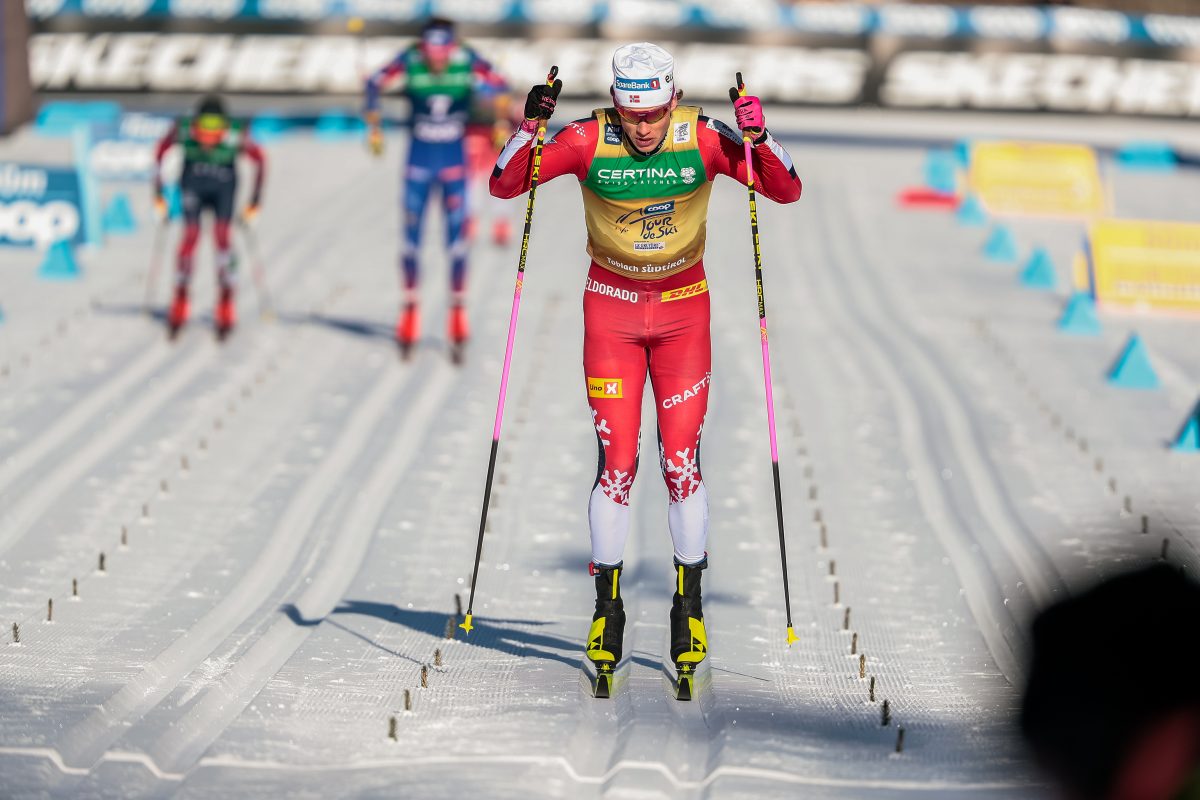
The 2011-2012 U.S. Ski Team (USST) roster has been out since April, and on the surface, the biggest piece of news in the announcement was sheer numbers. With seven men and five women named to the team, the squad is nearly twice the size it was last year.
In order to take advantage of their new strength, USST coaches decided to officially split the team into a men’s and a women’s squad—an arrangement that follows the model seen with most teams on the World Cup. Until now, the U.S. men and women have trained together and shared coaches, mainly because it never made sense to split up half a dozen athletes.
But with the addition of six rookies to the lineup this year—Sadie Bjornsen, Jessie Diggins, Ida Sargent, Skylar Davis, Erik Bjornsen and Tad Elliott—USST coaches Chris Grover and Matt Whitcomb saw an opportunity to take advantage of strengths they haven’t had before. By splitting the team and coaching staff, they are hoping to streamline communication between coaches, staff and athletes, and also foster mentoring of the younger skiers by the more experienced athletes.
With a joint camp in Bend already under their belts, coaches and athletes alike have already noticed a difference in the overall atmosphere. “By aligning ourselves in men’s and women’s teams, we are better able to learn from each other. It’s easier to conduct group training, for example,” said Grover, who remains the head coach.
Grover said that there was more group training at the Bend camp than he’s ever seen in his 10 years with the USST. “Both groups were drawing on pride and inspiration not only from their own achievements, but from the group’s achievements as well….The women were pushing each other; the men were pushing each other.”
“I am very pleased with how this change has manifested itself so far,” he said.
Andy Newell, a veteran of the team, was excited that the new structure was already facilitating more teamwork. “It’s been a really small men’s team the past few years, but now we all come together to train a lot more, and it’s easier for us to have small get-togethers. We communicate better as a team, and check in on a weekly basis to make sure everyone’s putting in the work.”
Kris Freeman, also a long time USST member, says the new development makes a lot of sense. “We have a great crew with a lot of young talent, and I hope we can use that to get to the next level,” he said.
Kikkan Randall and Liz Stephen, the experienced upperclassmen on the women’s side, are particularly excited about having a team to call their own. The women have gone from having no team a decade ago to now having a strong core croup of five athletes who, just in the last year, have notched a World Cup podium, several top-30s at World Championships, a top-10 at World Juniors, and top-20s at U23s.
“These five girls are leaders in the U.S. ski community,” said Whitcomb, who is heading up the women’s squad. “They are well-respected, have a mountain of energy, and represent many regions in the U.S.—Alaska, West, Midwest and East. It isn’t only training that makes them ski fast, but is also very much about feeling invested in the sport.”
Which is partly why the two squads are splitting up for their big summer camps this year. The men will go to the Snow Farm in New Zealand, just as they have for the past several years, while the women will be headed to Eagle Glacier in Alaska. The ability to host separate camps was a major reason for the division of the team in the first place.
By having their camp on Eagle Glacier, the training ground for Alaska Pacific University (APU), the women were able to invite others to join them, including APU, Canadians Chandra Crawford and Perianne Jones, and a few juniors. The intent is to make the most of a good relationship with APU, and to keep the momentum the women generated this winter to trickle down to the elite seniors and juniors.
“The success of our national team is fully contingent on partnerships, and we chose to move our women’s camp to Alaska to make the most of a partnership between the USST and APU. We work really well with Erik Flora and his team, we share a couple of athletes, and we’re fired up to train in Anchorage. Our success will run only as far as our partnerships can take us,” said Whitcomb.
In the spirit of collaboration and inspiring more women to follow in their footsteps, the USST women came up with the idea for the Women’s Video Contest this year. “We wanted club teams, high school teams, REG camps, and training groups all over North America to show us and each other how they’re being hardcore, having fun, and coming together to work hard,” said Randall. “We want to keep fueling the fire and show off the good things we have going in this country.”
“Giving back to the sport is very motivational,” added Whitcomb of the women’s team. “They love this sport, and what makes it more fulfilling is being able to reach out and pull each other along.”
While the men and women may be training separately a bit more these days, they still recognize the benefits of working together. In a lot of ways, the day-to-day operation of the team won’t be changing. They’ll still eat together and drive to workouts in the same van. Said Newell, “Most other countries are completely separate; they even travel separately to the World Cup. We don’t want to quite get to that level yet, because we learn a lot from each other.”
Audrey Mangan
Audrey Mangan (@audreymangan) is an Associate Editor at FasterSkier and lives in Colorado. She learned to love skiing at home in Western New York.



